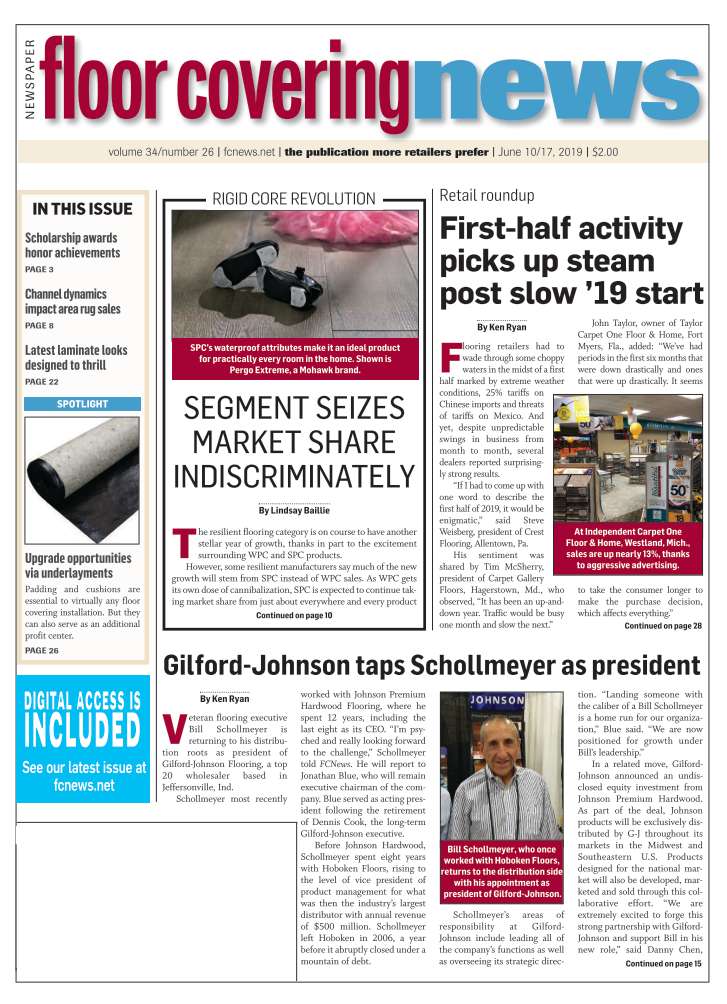June 10/17, 2019: Volume 34, Issue 26
By Steven Feldman
 Membership. It’s a concept we don’t really think about much, yet seven out of 10 people belong to some sort of club or organization, according to the American Society of Association Executives. This could be anything from a religious group to a frequent flyer program or the Chamber of Commerce. Putting it another way, 70% of us are “joiners” who like the sense of belonging.
Membership. It’s a concept we don’t really think about much, yet seven out of 10 people belong to some sort of club or organization, according to the American Society of Association Executives. This could be anything from a religious group to a frequent flyer program or the Chamber of Commerce. Putting it another way, 70% of us are “joiners” who like the sense of belonging.
This is why American Express and other credit card companies refer to their users as members, why there are travel clubs and so on. There are even clubs that start out of their own volition, like the Parrotheads—fans of Jimmy Buffet—or the Deadheads, which pledge their allegiance to the late Jerry Garcia.
Each political party has different “clubs” used for fundraising. Magazine and newsletter subscriptions are positioned as memberships, i.e., the National Geographic Society.
Even without attaching a name to it, Hugh Hefner brilliantly marketed Playboy magazine from its inception as something more. The “what sort of a man reads Playboy?” advertising convinced a generation of men that reading the magazine meant being part of a uniquely appealing lifestyle and philosophy. Even the wearing of logo apparel is, in a way, striving to “belong.” If you pay attention, you’ll see “membership concept marketing” at work all around you.
Here’s the thing: Not only do people respond to this concept, they also derive reassurance from it. Instant credibility can be created solely via the right association branding. Response percentages almost always go up when marketing is done under the auspices of an association or membership.
In addition, in an ever-more-confusing marketplace, consumers use their memberships as a shortcut for sorting out choices. For example, members of Sam’s Club or Costco feel comfortable ignoring ads and coupons from competing grocery stores, instead buying everything where they are a member, trusting they are getting the best deal there.
Taking this concept one step farther, like cats that are always eager to get into whatever room has a closed door, people tend to desire most what they can’t have. Whether we want to admit it or not, we lust after other people’s things—cars, jobs, even significant others. A closed door is as arousing to humans as it is to cats.
This was the subject of an article I recently read that was referred to as “red room/blue room marketing.” The premise is that it’s easy to make everybody in the red room desperately want to join the group in the blue room, and to make everybody in the blue room want admission to the red room. This has many applications, including making prospects “qualify” to buy.
There are two ideas you might want to consider in your own marketing initiatives. No. 1, packaging certain benefits, services and products you now sell and/or deliver routinely together as the privileges of “membership” in a named club or organization; and No. 2, creating a new “club” to market, and to use that as the means of attracting customers to your stores who might otherwise ignore you and/or sustaining greater customer loyalty and higher margins.
Think about this for a second: What if you created the “XYZ Flooring Loyalty Club” for past customers. Send them special offers every month or so. Private sales would fall into this category. Be creative, but make these customers feel like they are receiving something they will not obtain anywhere else. Make them feel like they are getting the best deal possible.
Taking this one step farther, get a list of new homeowners in your area. They will be purchasing flooring now or in the not-too-distant future. Induct them into the club. Provide them with special offers. Make them feel special. Create perceived value.
Of course, you can reach out to anyone and offer them membership. But the key, like American Express has conveyed for years, is that “Membership has its privileges.” Or at least we believe it does.

